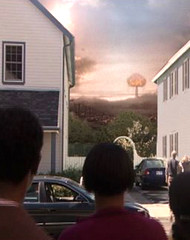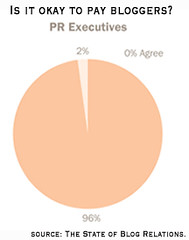“How can we do more to encourage young people to pursue careers in science and technology?” — Bill Gates on Linkedin
If there was ever a Linkedin question I wanted to answer but did not have time to answer, this was the one. Never mind the 3,567 people who did provide answers.
The question came to mind again after I opened the Las Vegas Review-Journal today to read that Clark County School District (which includes Las Vegas) students who were tested in January on their grasp of first semester material in high school algebra and geometry did not hit the mark.
• 90.5 percent failed the exam for Algebra I
• 87.8 percent failed the exam for Geometry
• 86.6 percent failed the exam for Algebra 2
The test results mirror some of the early results for writing proficiency on the other side of the country. In Vermont, only 37 percent of the students were proficient writers.
Maybe the answer is simpler than expected. When Richard Feyman, winner of the Nobel Prize in physics, taught abroad, he made an observation that students in some countries were excellent testers. However, if he deviated even slightly from the memorized material, none of the students could produce an answer. All they had been taught, it seems, was memorization.
It’s becoming the same here. Upon learning my son’s school stopped its educational curriculum to dedicate an entire month preparing for tests mandated by the federal government and tied to educational funding, I couldn’t help but wonder if our educational priorities have shifted to be the same. The school’s motivation was to produce test scores that resulted in more funding.
Maybe it’s me, but I thought the priority was to educate students.
Don’t get me wrong. The tests are fine, especially because they seem to be revealing a disconnect between what educators are teaching and what students are learning. The administrative priorities, on the other hand, are not. The more emphasis school administrators place on teaching students to rote memorize material rather than learning to apply it across a variety of circumstances and subjects, the faster the educational system will sink.
So how can we encourage young people to pursue careers in science and technology? By teaching students to apply basic math skills like Algebra 1, Geometry, and Algebra 2 to equations that are interesting, applicable, and tied to practicality in the fields of science and technology as opposed to the rote memorization of formulas that most cannot connect to any real life application.
It has always been that way. Homer Hickman, who was inspired by the first Sputnik launch to take up rocketry, learned advanced mathematics and physics not for a love of memorizing numbers, but because they were necessary. More educators are speaking to this fact, but the concepts of applied learning need to be introduced much earlier than college. Craig R. Barrett, the chairman of Intel, said the same.
The same holds true for writing. Students who completed my Writing For Public Relations class noted the difference. While I would cover common mistakes on homework assignments over and over, most assignments were structured to reintroduce them to learning how to learn.
Learning how to learn is the single most important skill set for public relations, because the best practitioners tend to learn about companies and industries they serve as opposed to simply counting phone numbers in a Rolodex. Truly, they must learn to work through problems as opposed to blindly applying rules like Michael Scott (Steve Carell) did during one of my favorite episodes of The Office.
The same holds true in just about everything. It’s easy enough to find top ten tips to increase Web traffic, which storylines trigger brain activities, or allow the opinions of 25,000 viewers to dictate network programming. You don’t have to think to apply any of these solutions. Anyone can do it.
Wasn’t that partially the fate of the Roman Empire? The society became so advanced that the population began to promote entertainment over education and popularity over production until one day, their laurels could no longer hold up to the weight of the luxurious lifestyle they inherited.

If there was ever a Linkedin question I wanted to answer but did not have time to answer, this was the one. Never mind the 3,567 people who did provide answers.
The question came to mind again after I opened the Las Vegas Review-Journal today to read that Clark County School District (which includes Las Vegas) students who were tested in January on their grasp of first semester material in high school algebra and geometry did not hit the mark.
• 90.5 percent failed the exam for Algebra I
• 87.8 percent failed the exam for Geometry
• 86.6 percent failed the exam for Algebra 2
The test results mirror some of the early results for writing proficiency on the other side of the country. In Vermont, only 37 percent of the students were proficient writers.
Maybe the answer is simpler than expected. When Richard Feyman, winner of the Nobel Prize in physics, taught abroad, he made an observation that students in some countries were excellent testers. However, if he deviated even slightly from the memorized material, none of the students could produce an answer. All they had been taught, it seems, was memorization.
It’s becoming the same here. Upon learning my son’s school stopped its educational curriculum to dedicate an entire month preparing for tests mandated by the federal government and tied to educational funding, I couldn’t help but wonder if our educational priorities have shifted to be the same. The school’s motivation was to produce test scores that resulted in more funding.
Maybe it’s me, but I thought the priority was to educate students.
Don’t get me wrong. The tests are fine, especially because they seem to be revealing a disconnect between what educators are teaching and what students are learning. The administrative priorities, on the other hand, are not. The more emphasis school administrators place on teaching students to rote memorize material rather than learning to apply it across a variety of circumstances and subjects, the faster the educational system will sink.
So how can we encourage young people to pursue careers in science and technology? By teaching students to apply basic math skills like Algebra 1, Geometry, and Algebra 2 to equations that are interesting, applicable, and tied to practicality in the fields of science and technology as opposed to the rote memorization of formulas that most cannot connect to any real life application.
It has always been that way. Homer Hickman, who was inspired by the first Sputnik launch to take up rocketry, learned advanced mathematics and physics not for a love of memorizing numbers, but because they were necessary. More educators are speaking to this fact, but the concepts of applied learning need to be introduced much earlier than college. Craig R. Barrett, the chairman of Intel, said the same.
The same holds true for writing. Students who completed my Writing For Public Relations class noted the difference. While I would cover common mistakes on homework assignments over and over, most assignments were structured to reintroduce them to learning how to learn.
Learning how to learn is the single most important skill set for public relations, because the best practitioners tend to learn about companies and industries they serve as opposed to simply counting phone numbers in a Rolodex. Truly, they must learn to work through problems as opposed to blindly applying rules like Michael Scott (Steve Carell) did during one of my favorite episodes of The Office.
The same holds true in just about everything. It’s easy enough to find top ten tips to increase Web traffic, which storylines trigger brain activities, or allow the opinions of 25,000 viewers to dictate network programming. You don’t have to think to apply any of these solutions. Anyone can do it.
Wasn’t that partially the fate of the Roman Empire? The society became so advanced that the population began to promote entertainment over education and popularity over production until one day, their laurels could no longer hold up to the weight of the luxurious lifestyle they inherited.




















